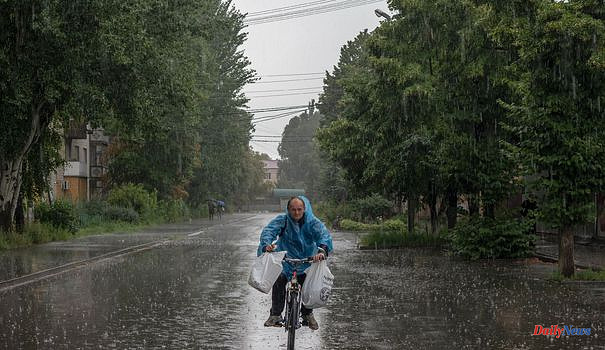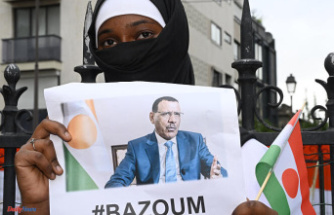Artillery strikes can be heard in the distance and armored vehicles race down the streets, but these cyclists refuse to flee, projecting a semblance of normality into a devastated landscape.
In the suburbs of kyiv, abandoned at the end of March by Russian forces, AFP journalists had seen many bodies of people on bicycles, apparently shot dead as they tried to continue a normal rhythm of life in perilous circumstances.
"Nothing has touched me so far," breathes Otari Iounashvili, a 77-year-old cyclist met in Toretsk, eastern Ukraine, his words revealing gold and silver teeth under a gray mustache.
On Thursday, eight people were mowed down by a Russian shell falling on a bus stop in Toretsk, according to the governor of the region. In the night that followed, shops were destroyed by new bombardments, according to locals.
On Friday morning, cleanup crews were at work clearing away debris and bricks under a cloud of dust. A team swept the scene, while the artillery duel between Russians and Ukrainians was heard in the distance.
The cyclists quietly watch the works even as cars rush to leave the city, belongings hanging from the roof.
"I don't have a car to drive, but I still need to get around," says Oleksandre, a 60-year-old retired miner, clinging to the handlebars of his visibly devoid of brakes bicycle.
- "Who will care?" -
"Of course I feel the danger", he eventually admits: "But if I'm shot, who will care?".
Since Russia withdrew its troops from around kyiv, most of the fighting has taken place in the Donbass, an industrial basin partly in the hands of pro-Russian separatists since 2014.
Clashes often boil down to artillery duels and territorial gains are slow.
The towns and villages, for their part, are marked by the traces of the bombardments. Buildings are nailed with planks of wood and fortified with sandbags, seemingly abandoned on the battlefield forever.
Last week, Ukrainian President Volodymyr Zelensky urged residents of the region to leave it without delay, but authorities estimate that hundreds of thousands of people remain, not counting those present in territories under Russian or pro-Russian control.
Among those who remain are many elderly people, often without family ties or the money to find a new home elsewhere. Others refuse to leave.
"Cycling is good for your health, while driving is stressful," says Volodymyr, 74, as he collects grass by the side of the road to feed his ducks and chickens at home .
His pistachio-green bicycle is parked under a propaganda sign displaying a Ukrainian soldier with an anti-tank weapon, near Kramatorsk, the last major administrative center still under Ukrainian control in the region.
"If something happened, I'd rather die on the spot, so I won't be disabled," says Volodymyr defiantly.
Stoicism appears to be the prevailing ethos among Donbass cyclists, hardened by eight years of conflict with Moscow-backed separatists.
Viktor, 62, pedals his 40-year-old bicycle -- made in the Soviet Union -- with his pants tucked into his socks so they don't get caught in the wheels or the chain.
"I feel safe, our troops are here," he said. What if a rocket lands? "I will hide in the bushes!"












